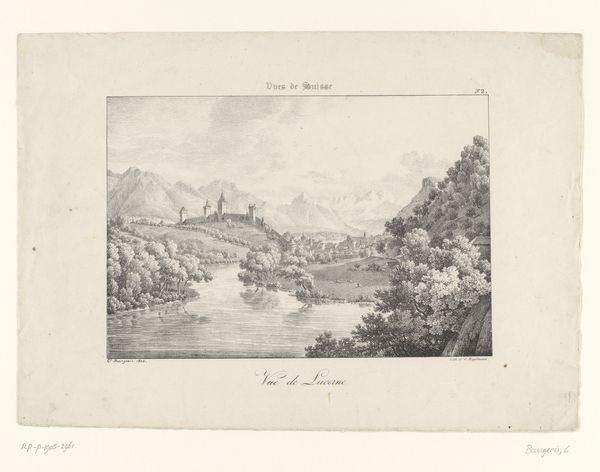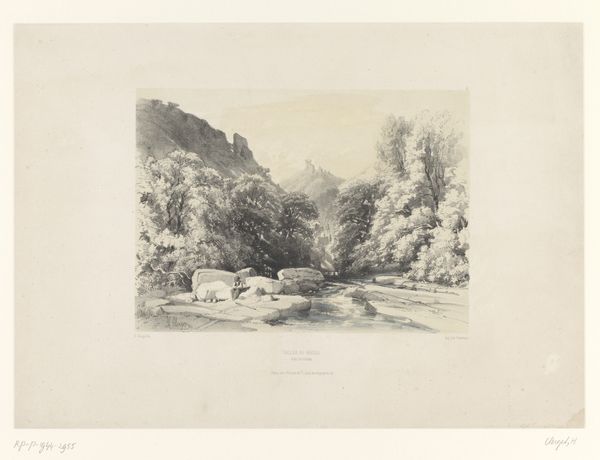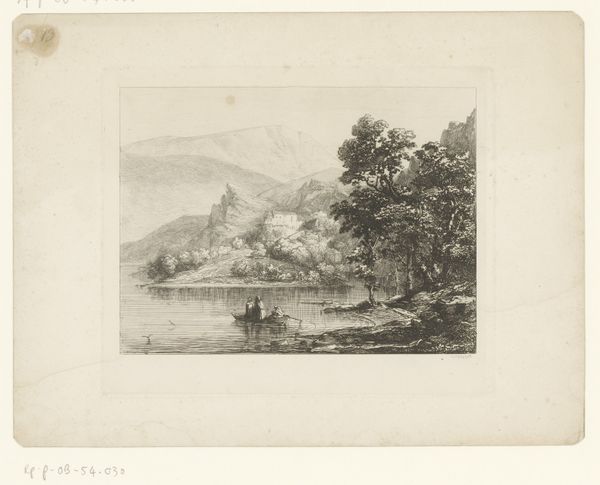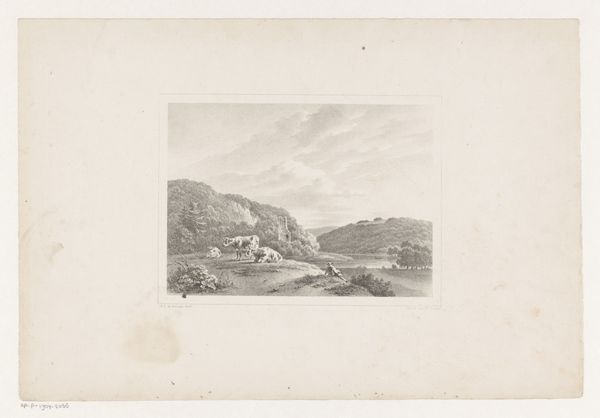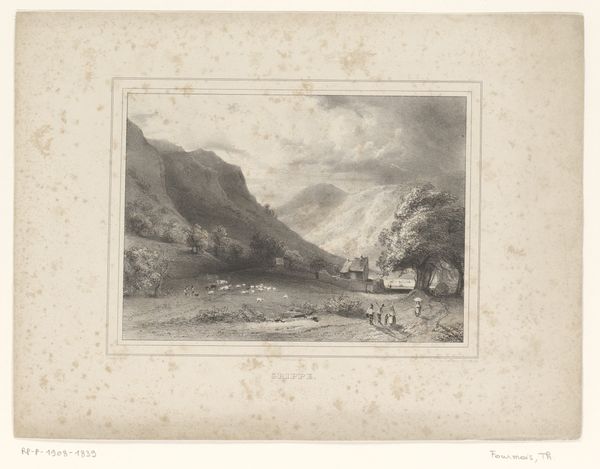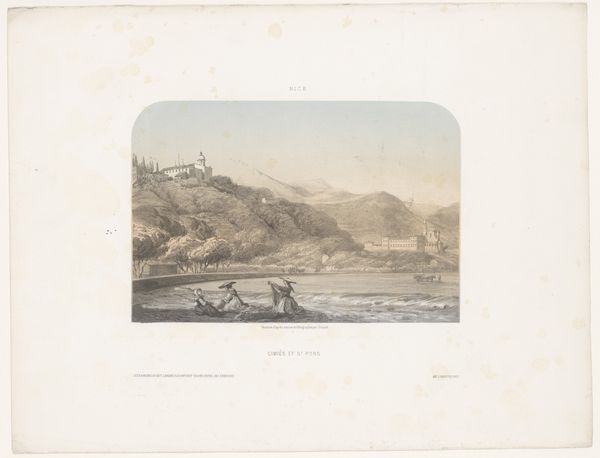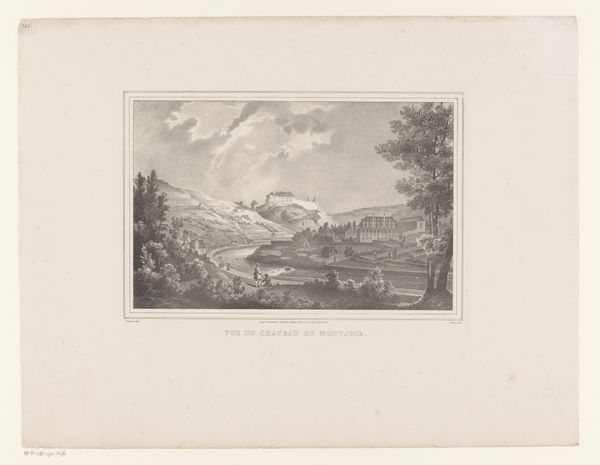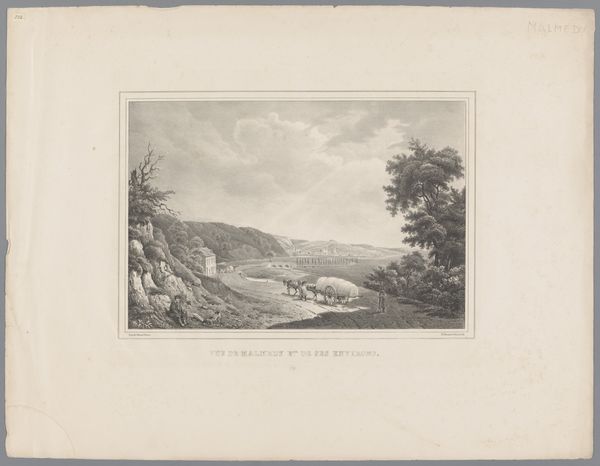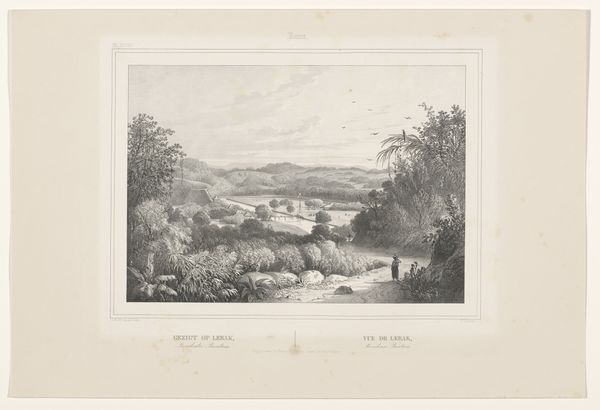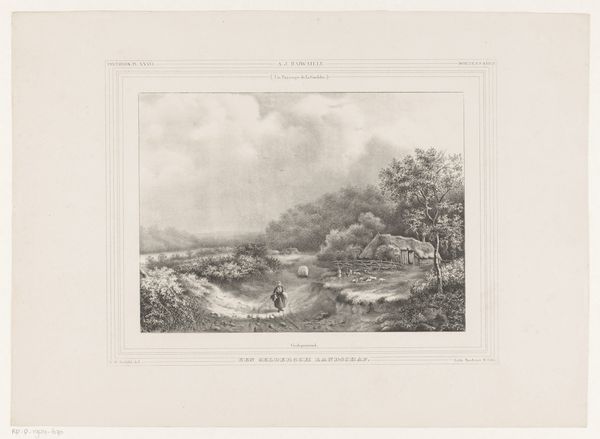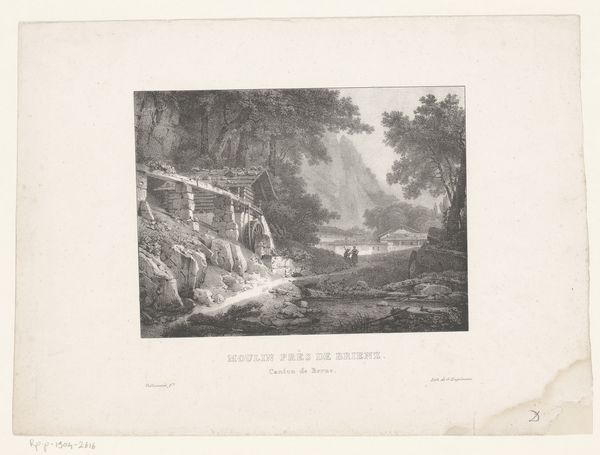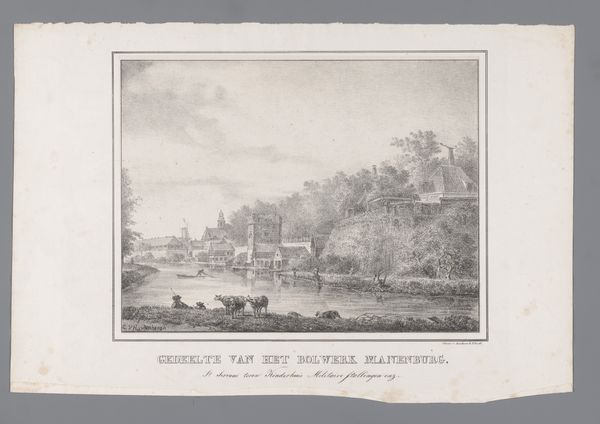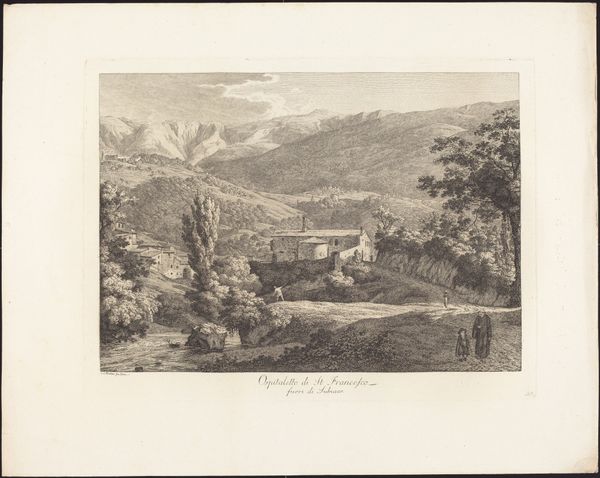
print, etching, engraving
#
pencil drawn
# print
#
etching
#
pencil sketch
#
landscape
#
river
#
romanticism
#
engraving
Dimensions: height 152 mm, width 235 mm
Copyright: Rijks Museum: Open Domain
Curator: There's a sense of profound calm that settles over me looking at this print. The texture feels dreamlike. Editor: That's interesting. This etching by Henry Winsor Bond, circa 1836, titled "View Near Plastria on the River Saison, France," certainly evokes the picturesque, doesn't it? It speaks to the Romantic era’s idealization of nature. Curator: Definitely. Water is a central feature—as it often is in our symbolic language— representing the ebb and flow of time. And then a cow and what appear to be two women near the shore…a scene of simple, rural life. There is the wooden bridge uniting the landscapes on both sides, which speaks to connectivity, journeys, and passages between states of being. Editor: Note that the presence of women suggests the gendering of this landscape: domesticity and care situated within this constructed ideal. It presents a counter-narrative to industrialized Europe but likely represents a patriarchal interpretation of this rural scene. Curator: Absolutely, there’s a strong tension at play. Notice how the mountains in the background, rendered with hazy detail, serve as enduring symbols of the eternal, which offers a glimpse into our need for permanence. Editor: Yes, the composition directs our eye from the immediate, domestic activities towards that distant, timeless landscape, which effectively places the working class and the daily toil in a longer temporality. This artistic choice may further romanticize it, making the subjects almost picturesque—flattening any notion of political reality. Curator: It highlights the enduring need to find resonance, meaning, or transcendence through the simple act of mark-making on a page, reflecting the power of artistic traditions in our ever-evolving visual culture. Editor: Indeed, it forces us to consider the power dynamics implicit in romanticizing pastoral life. This view near Plastria becomes more complex when we situate it within historical power structures. Curator: Seeing the artwork this way illuminates aspects I wouldn't have noticed. I am also drawn to think of all of the journeys the image itself had had. Editor: For me, the social dynamics here continue to linger. Perhaps, we both bring different but valid ideas of meaning and insight when considering artworks of the past.
Comments
No comments
Be the first to comment and join the conversation on the ultimate creative platform.
